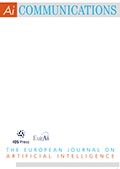Authors: Sun, Ning | Shen, Pengfei | Ye, Xiaoling | Chen, Yifei | Cheng, Xiping | Wang, Pingping | Min, Jie
Article Type:
Research Article
Abstract:
Fire monitoring of fire-prone areas is essential, and in order to meet the requirements of edge deployment and the balance of fire recognition accuracy and speed, we design a lightweight fire recognition network, Conflagration-YOLO. Conflagration-YOLO is constructed by depthwise separable convolution and more attention to fire feature information extraction from a three-dimensional(3D) perspective, which improves the network feature extraction capability, achieves a balance of accuracy and speed, and reduces model parameters. In addition, a new activation function is used to improve the accuracy of fire recognition while minimizing the inference time of the network. All models are trained and validated
…on a custom fire dataset and fire inference is performed on the CPU. The mean Average Precision(mAP) of the proposed model reaches 80.92%, which has a great advantage compared with Faster R-CNN. Compared with YOLOv3-Tiny, the proposed model decreases the number of parameters by 5.71 M and improves the mAP by 6.67%. Compared with YOLOv4-Tiny, the number of parameters decreases by 3.54 M, mAP increases by 8.47%, and inference time decreases by 62.59 ms. Compared with YOLOv5s, the difference in the number of parameters is nearly twice reduced by 4.45 M and the inference time is reduced by 41.87 ms. Compared with YOLOX-Tiny, the number of parameters decreases by 2.5 M, mAP increases by 0.7%, and inference time decreases by 102.49 ms. Compared with YOLOv7, the number of parameters decreases significantly and the balance of accuracy and speed is achieved. Compared with YOLOv7-Tiny, the number of parameters decreases by 3.64 M, mAP increases by 0.5%, and inference time decreases by 15.65 ms. The experiment verifies the superiority and effectiveness of Conflagration-YOLO compared to the state-of-the-art (SOTA) network model. Furthermore, our proposed model and its dimensional variants can be applied to computer vision downstream target detection tasks in other scenarios as required.
Show more
Keywords: Target detection, Conflagration-YOLO, light weigh, real-time detection
DOI: 10.3233/AIC-230094
Citation: AI Communications,
vol. 36, no. 4, pp. 361-376, 2023
Price: EUR 27.50





